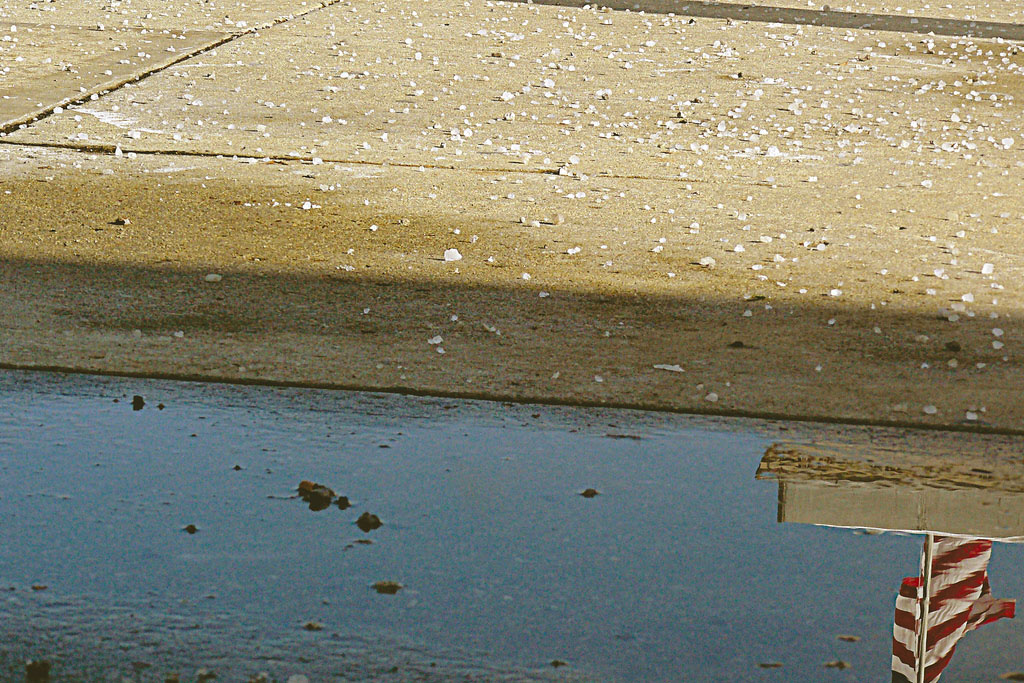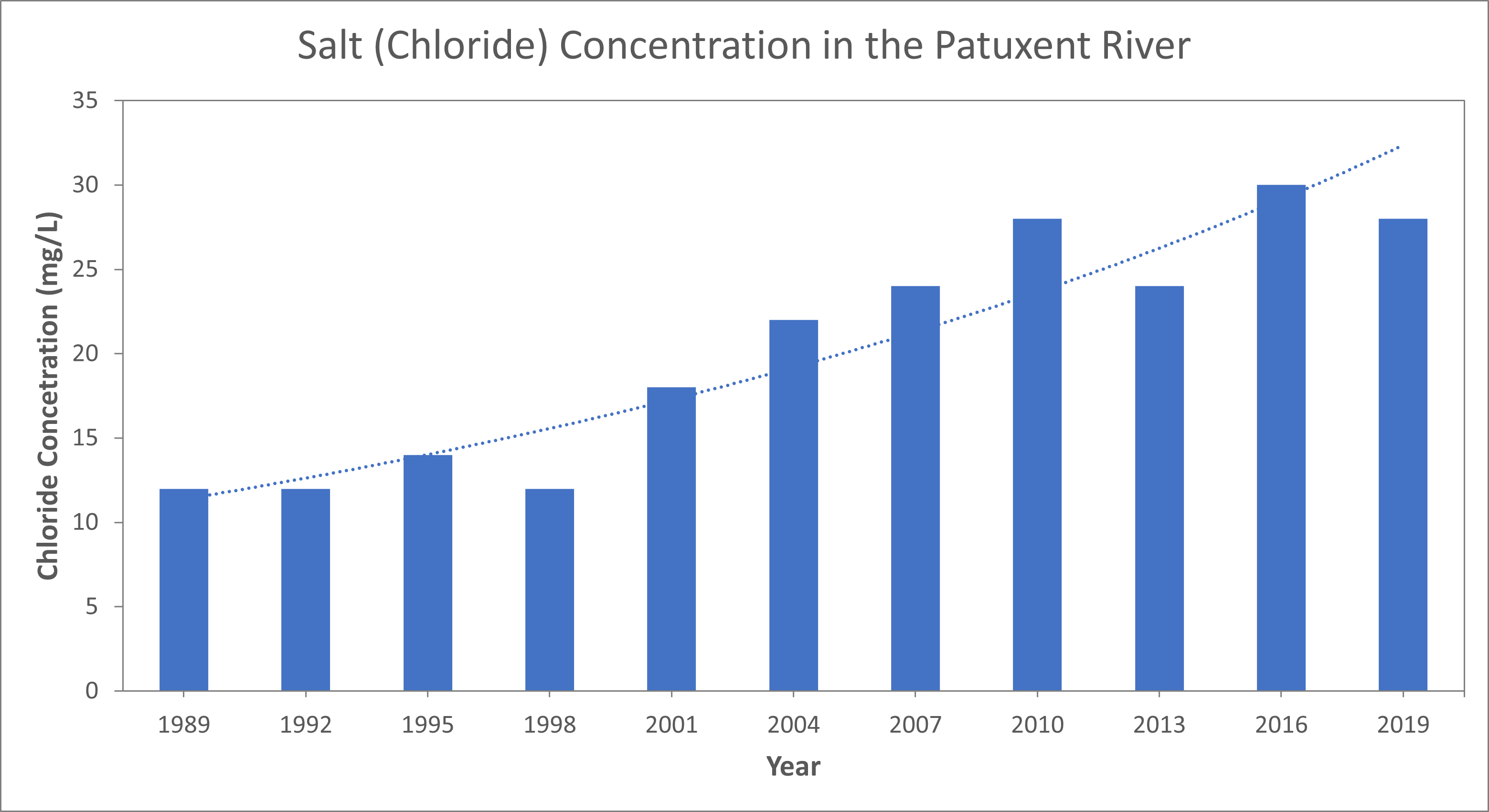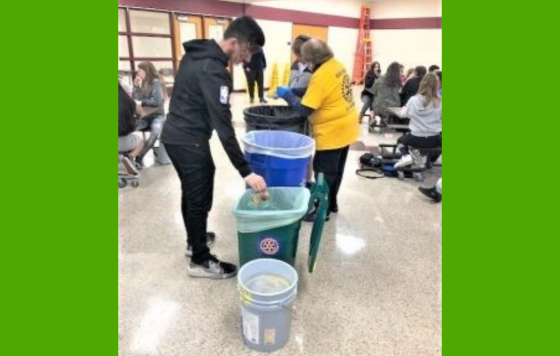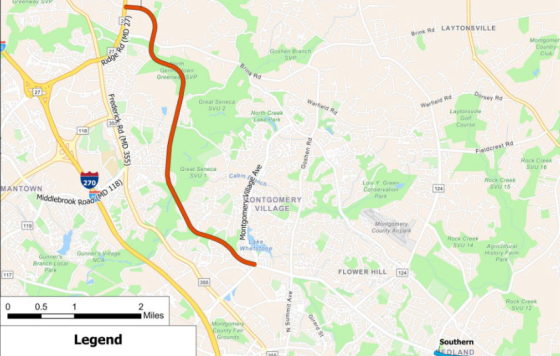
Accumulation
After salt enters the environment, there is a lag period before the salt is transported out of the freshwater system, as more salt accumulates, this lag period lengthens (Kelly et al. 8). As a result, while salinity spikes the highest during winter operations, salt levels remain elevated throughout the year and do not return to baseline levels. Furthermore, as a result of past road salt application, salt levels in freshwater systems are expected to “continue to climb even after we initiate road salt reduction strategies” (Kelly et al. 8).
While it is possible for salt levels to stabilize in freshwater systems, this will take decades of stabilized and reduced road salt usage. This problem will only grow more difficult to fix if action is not taken. Therefore, when considering its impact on organisms, we must acknowledge that salt pollution continues to impact ecosystems long after winter ends, and this problem has and will continue to worsen if there is no intervention [Kelly et al. 8].
As seen in the Patuxent and Potomac Rivers, salt concentrations continue to climb.


Plants and Animals
Freshwater organisms each tolerate a range of salinity. Typically, salinity does not reach lethal levels, but can occur in urban water bodies or intermittently during winter deicing operations [Kelly et al. 6]. In plants, signs of salt injury include leaf burn, change in leaf coloration, defoliation, and death (Prior and Berthouex 10). Loss of plants can cause harmful habitat changes for other organisms, such as less oxygenated waters [Winter Salt]. Some effects of salt pollution on animals include:
-
Sex reversal in frogs, masculinization of frog populations
-
Dysfunctional osmoregulation (regulation of bodily pressure), breathing problems, eating problems, and slowing growth in fish; especially detrimental to fish in early life stages [Winter Salt]
-
Decreasing benthic stream (river bed) organism populations, indicating a loss of stream health
-
Mammals and birds eating road salt, putting them at risk of being hit by vehicles and salt poisoning


